RAK12029 WisBlock Inductive Sensor Module Quick Start Guide
Prerequisite
Package Inclusions
Before going through each and every step on using the RAK12029 WisBlock Inductive Sensor Module, make sure to prepare the necessary items listed below:
Hardware
- RAK12029 WisBlock Inductive Sensor Module
- RAK19008 WisBlock IO Extension Cable (optional)
- Your choice of WisBlock Base with IO slot
- Your choice of WisBlock Core
- USB Cable
- Li-Ion/LiPo battery (optional)
- Solar charger (optional)
Software
- Download and install the Arduino IDE.
- To add the RAKwireless Core boards to your Arduino project, install the RAKwireless Arduino BSP. Follow the steps in the RAKwireless Arduino BSP.
Product Configuration
Hardware Setup
RAK12029 module is part of the WisBlock Sensor category and extends the WisBlock system with an inductive sensor module. The RAK12029 connects to the WisBlock Base Board through the IO slot. Figure 1 shows the assembly of a WisBlock Core highlighted in green and the RAK12029 module highlighted in red.
Also, always secure the connection of the WisBlock module by using compatible screws. For more information about RAK12029, refer to the Datasheet.
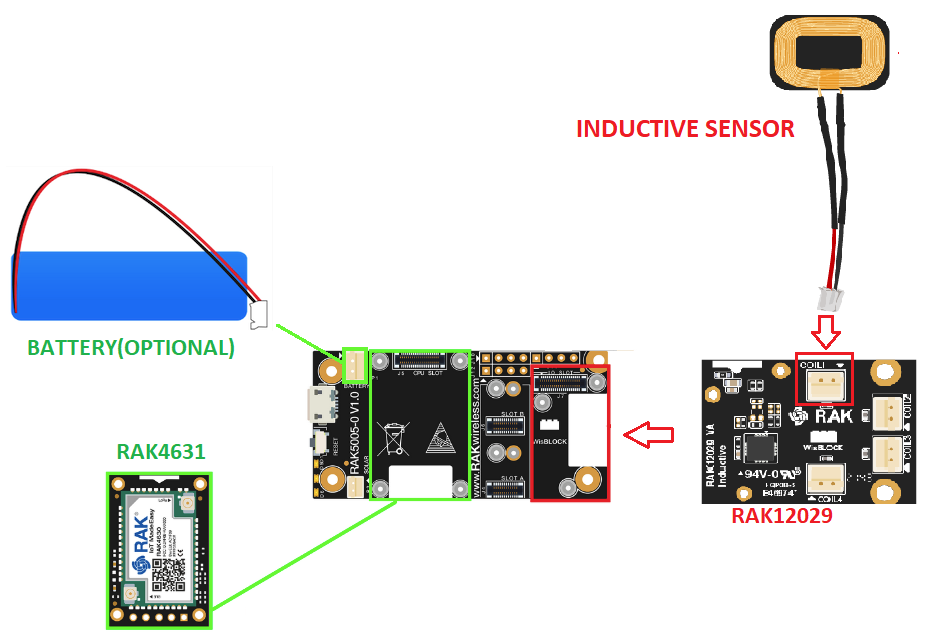 Figure 1: RAK12029 connection to WisBlock Base Board
Figure 1: RAK12029 connection to WisBlock Base BoardAssembling and Disassembling of WisBlock Modules
Assembling
As shown in Figure 2, the location for the IO slot is properly marked by silkscreen. Follow carefully the procedure defined in WisBlock Base board assembly/disassembly instructions to attach a WisBlock module. Once attached, carefully fix the module with one or more pieces of M1.2 x 3 mm screws depending on the module.
 Figure 1: RAK12029 connection to WisBlock Base Board
Figure 1: RAK12029 connection to WisBlock Base BoardDisassembling
The procedure in disassembling any type of WisBlock module is the same.
- First, remove the screws.
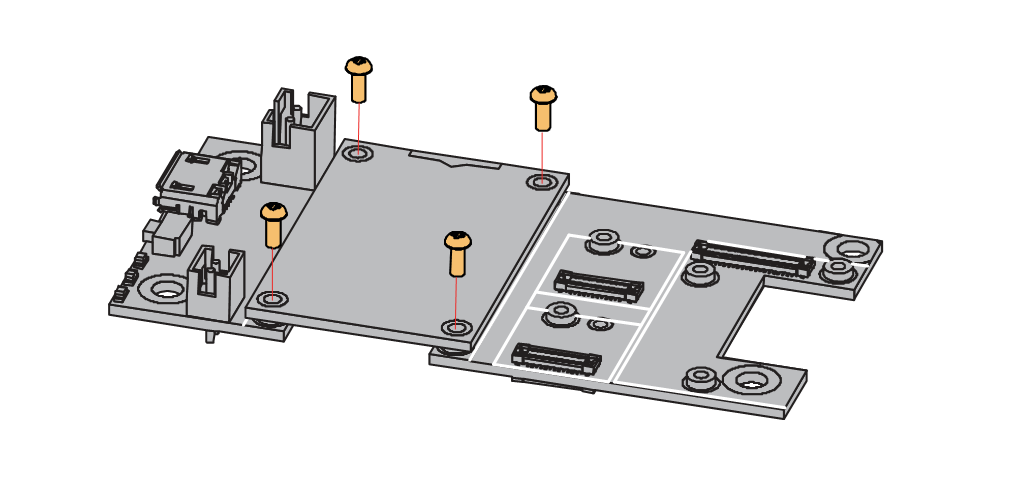 Figure 1: Removing screws from the WisBlock module
Figure 1: Removing screws from the WisBlock module- Once the screws are removed, check the silkscreen of the module to find the correct location where force can be applied.
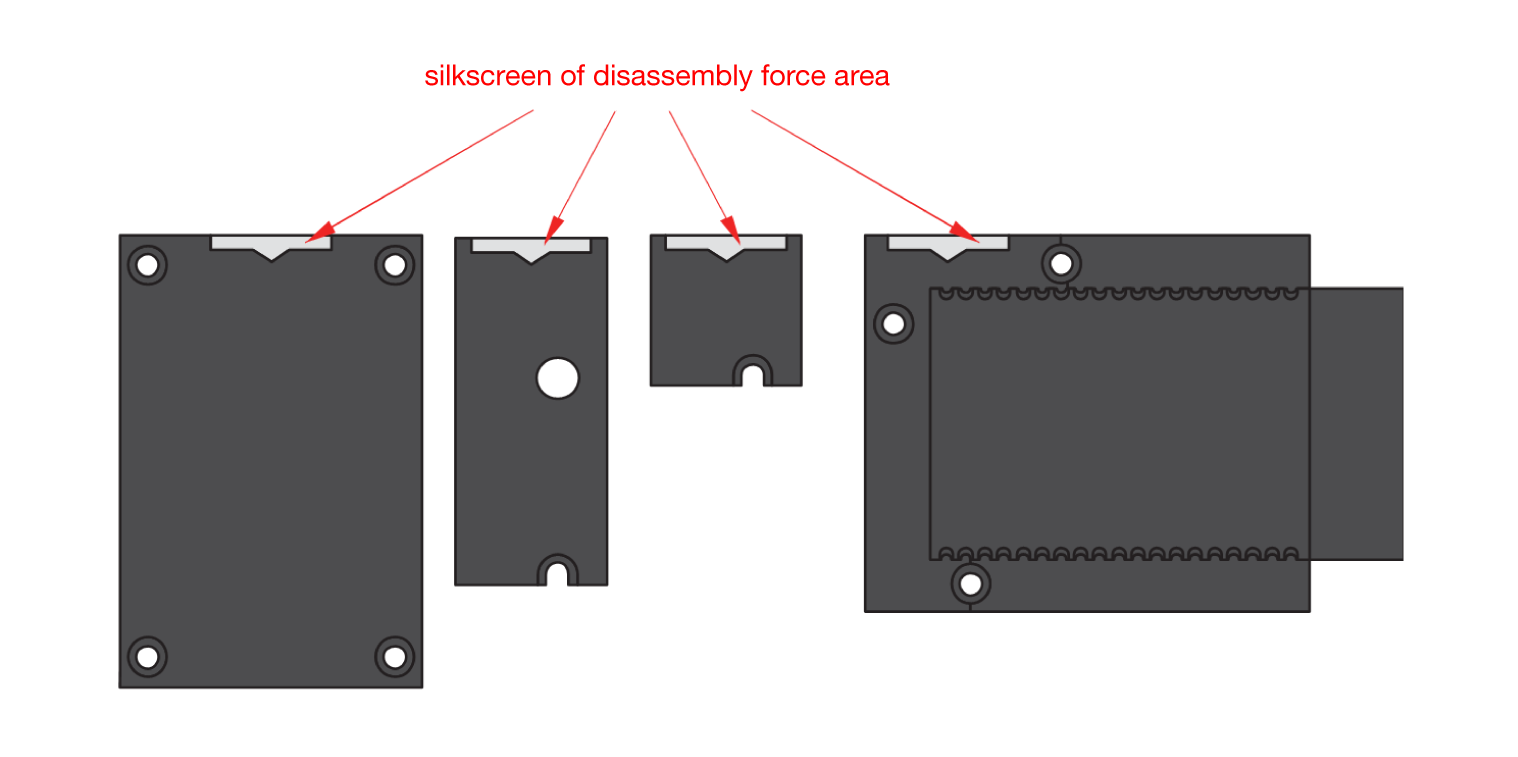 Figure 1: Detaching silkscreen on the WisBlock module
Figure 1: Detaching silkscreen on the WisBlock module- Apply force to the module at the position of the connector, as shown in Figure 5, to detach the module from the baseboard.
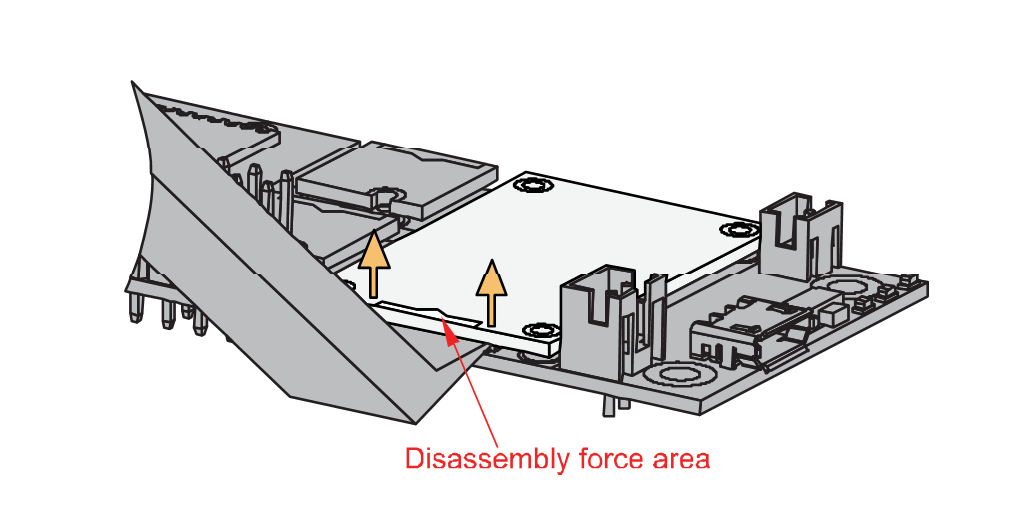 Figure 1: Applying even forces on the proper location of a WisBlock module
Figure 1: Applying even forces on the proper location of a WisBlock moduleIf you will connect other modules to the remaining WisBlock Base slots, check on the WisBlock Pin Mapper tool for possible conflicts. RAK12029 uses I2C and IO pins that can cause possible conflict with other modules.
After all this setup, you can now connect the battery(optional) and USB cable to start programming your WisBlock Core.
- Batteries can cause harm if not handled properly.
- Only 3.7-4.2 V Rechargeable LiPo batteries are supported. It is highly recommended not to use other types of batteries with the system unless you know what you are doing.
- If a non-rechargeable battery is used, it has to be unplugged first before connecting the USB cable to the USB port of the board to configure the device. Not doing so might damage the battery or cause a fire.
- Only 5 V solar panels are supported. Do not use 12 V solar panels. It will destroy the charging unit and eventually other electronic parts.
- Make sure the battery wires match the polarity on the WisBlock Base board. Not all batteries have the same wiring.
Software Configuration and Example
RAK12029 is a metal detection sensor module based on the LDC1614 from Texas Instruments. The LDC1614 is an inductance-to-digital converter (LDC) that measures the oscillation frequency of four LC resonators. It outputs a digital value, that is, proportional to frequency, with 28 bits of measurement resolution. With this digital value, you can detect the presence of metallic objects.
Initial Test of the RAK12029 WisBlock Inductive Sensor Module
-
Install the RAKwireless Arduino BSP for WisBlock by using the
package_rakwireless_index.jsonboard installation package. The WisBlock Core should now be available on the Arduino IDE. -
You need to select first the WisBlock Core you have, as shown in Figure 6 to Figure 8.
RAK4631 Board
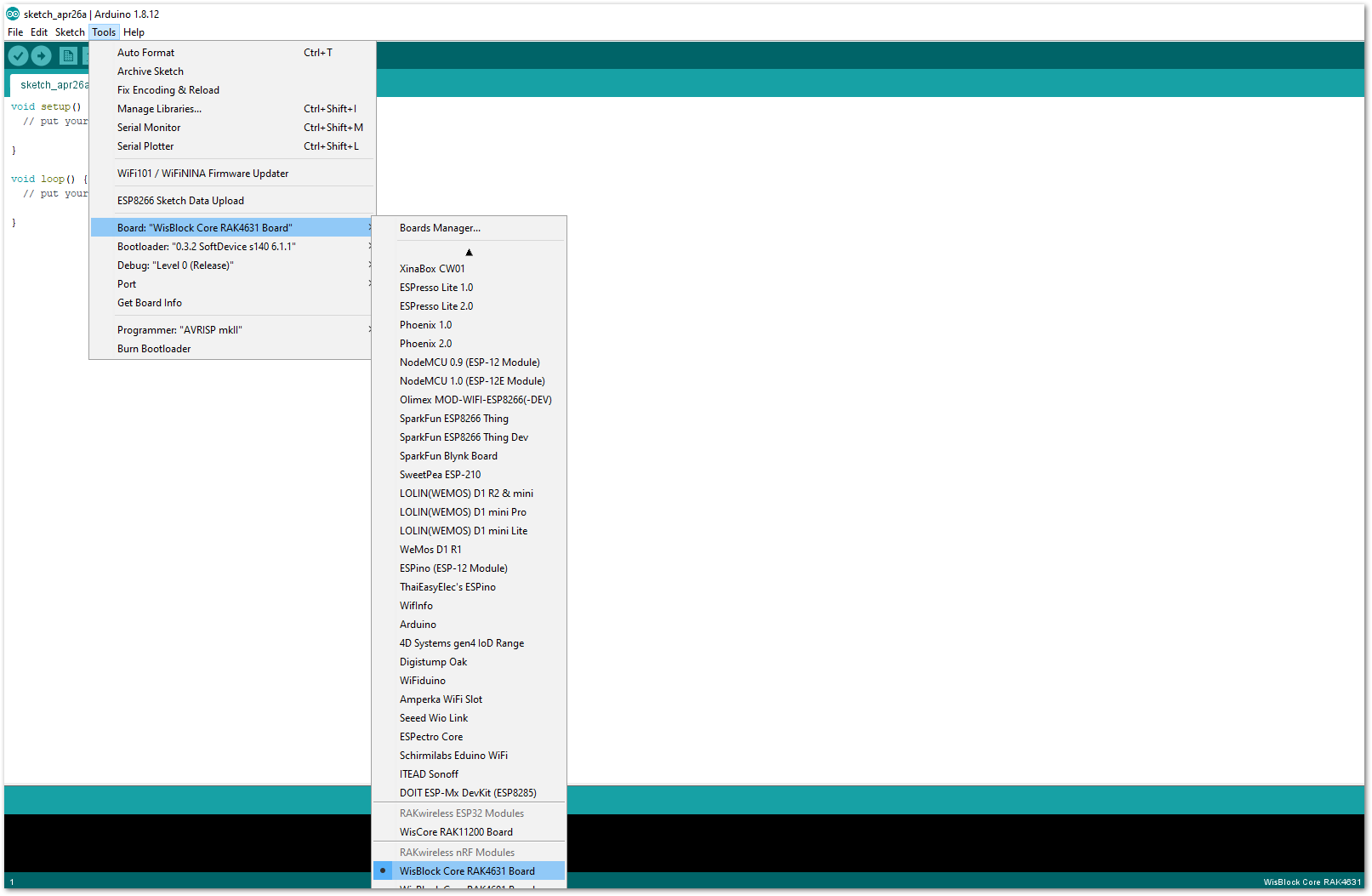 Figure 1: Selecting RAK4631 as WisBlock Core
Figure 1: Selecting RAK4631 as WisBlock CoreRAK11200 Board
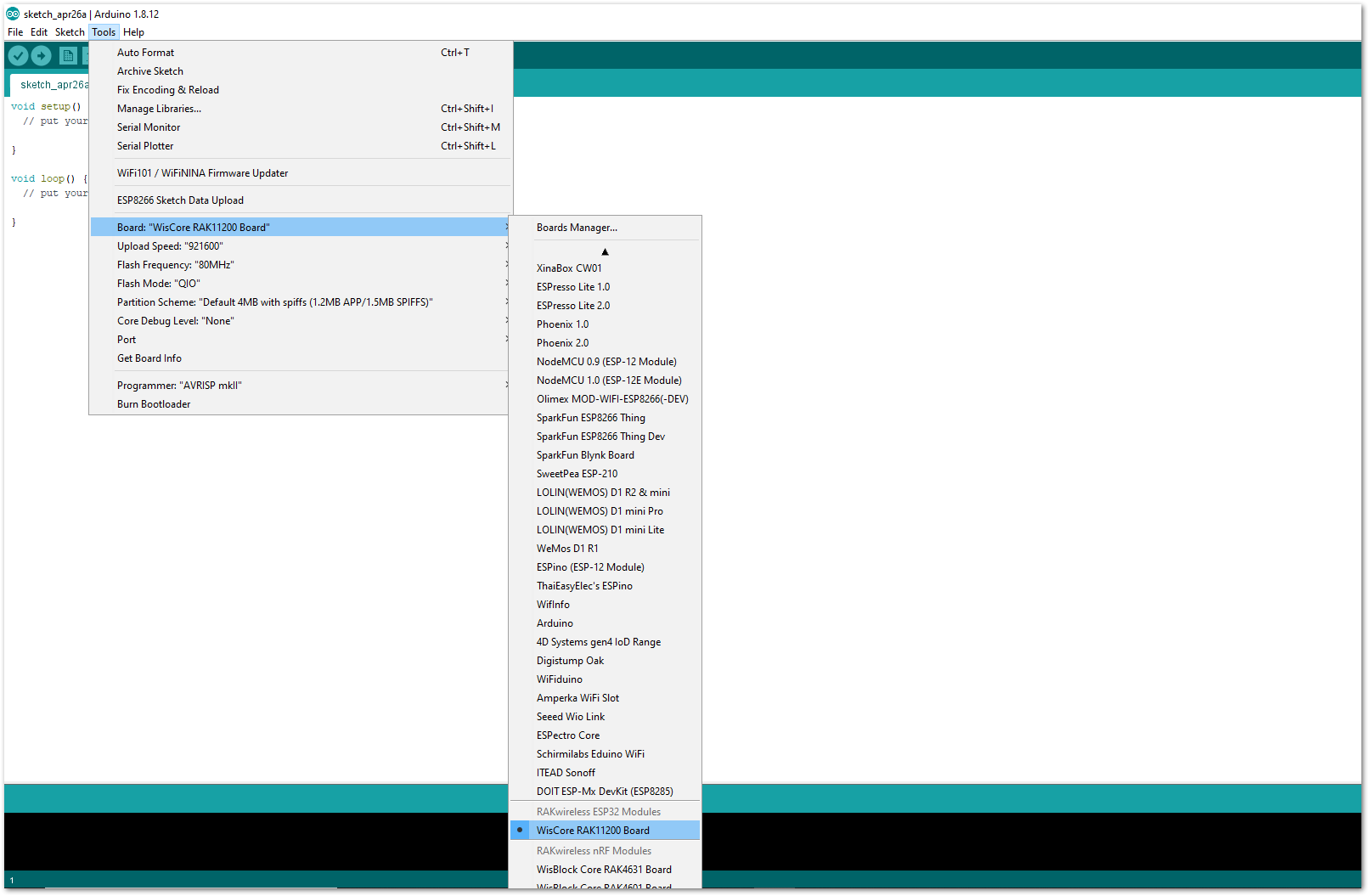 Figure 1: Selecting RAK11200 as WisBlock Core
Figure 1: Selecting RAK11200 as WisBlock CoreRAK11310 Board
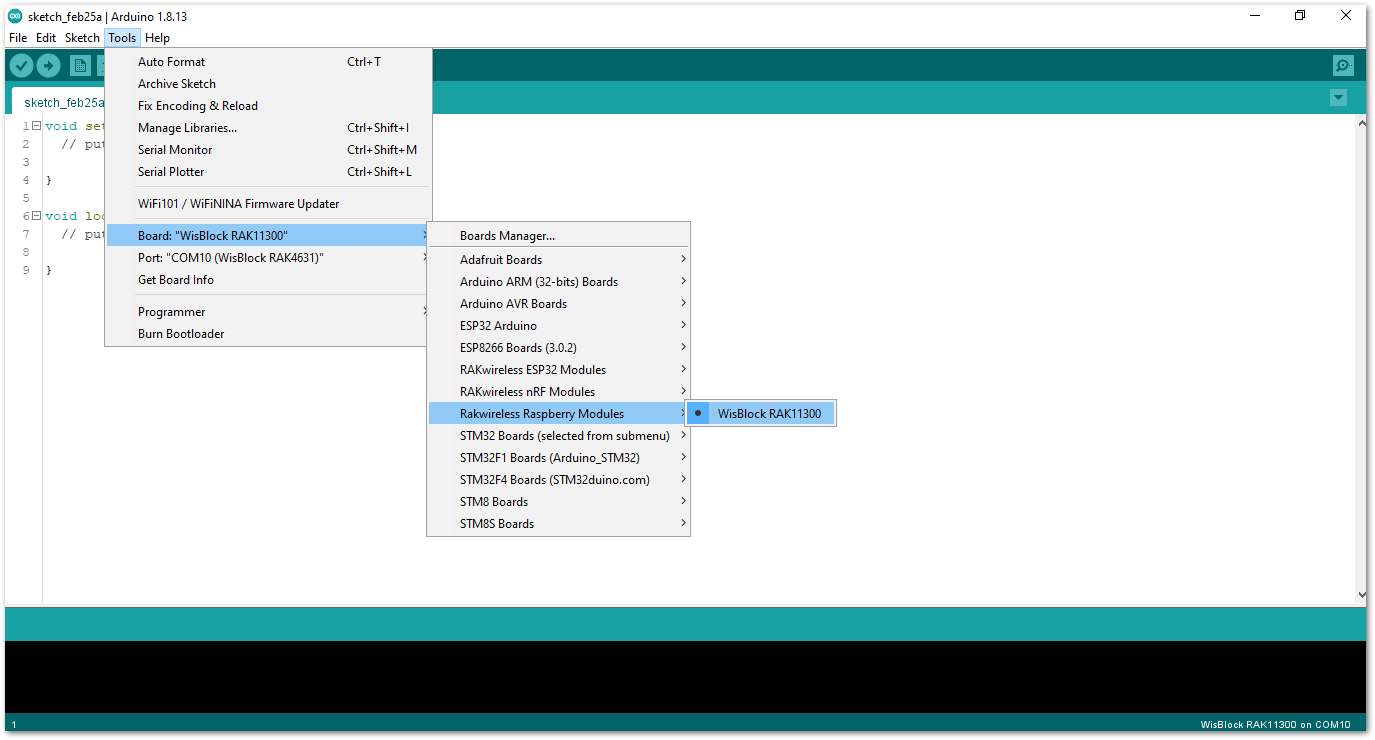 Figure 1: Selecting RAK11300 as WisBlock Core
Figure 1: Selecting RAK11300 as WisBlock Core- Copy the example code below:
Click to view the code
/**
@file Single_channel_detection.ino
@author rakwireless.com
@brief Metallic object detected
@version 1.0
@date 2021-11-17
@copyright Copyright (c) 2021
**/
#include "RAK12029_LDC1614.h" // Click to install library: http://librarymanager/All#RAK12029_LDC1614
#define INDUCTANCE 13.000
#define CAPATANCE 100.0
#define GETCHANNEL LDC1614_CHANNEL_0 //LDC1614_CHANNEL_(0~3)
RAK12029_LDC1614_Inductive ldc;
void setup()
{
pinMode(LED_BLUE, OUTPUT);
digitalWrite(LED_BLUE, LOW);
//Sensor power switch
pinMode(WB_IO2, OUTPUT);
digitalWrite(WB_IO2, HIGH);
delay(300);
//control chip switch
pinMode(WB_IO5, OUTPUT);
digitalWrite(WB_IO5, LOW);
// Initialize Serial for debug output
time_t timeout = millis();
Serial.begin(115200);
while (!Serial)
{
if ((millis() - timeout) < 5000)
{
delay(100);
}
else
{
break;
}
}
Serial.println("RAK12029 TEST");
delay(1000);
ldc.LDC1614_init();
/*single channel use case configuration.*/
if (ldc.LDC1614_single_channel_config(GETCHANNEL, INDUCTANCE, CAPATANCE))
{
Serial.println("can't detect sensor!");
while (1) delay(100);
}
}
void loop()
{
u16 value = 0;
ldc.IIC_read_16bit(LDC1614_READ_DEVICE_ID, &value);
if (value == 0x3055)
{
u32 ChannelData = 0;
/*Get channel 0 result and parse it.*/
delay(100);
if (ldc.LDC1614_get_channel_result(GETCHANNEL, &ChannelData) == 0)
{
/*sensor result value.you can make a lot of application according to its changes.*/
if (0 != ChannelData)
{
Serial.printf("The result channel%d is:%d\r\n", 4 - GETCHANNEL, ChannelData);
digitalWrite(LED_BLUE, HIGH);
}
delay(1000);
digitalWrite(LED_BLUE, LOW);
}
}
else
{
Serial.println("The IIC communication fails,please reset the sensor!");
delay(500);
}
}
If you experience any error in compiling the example sketch, check the updated code for your WisBlock Core Module that can be found on the RAK12029 WisBlock Example Code Repository and this sample code in Github will work on all WisBlock Core.
- Install the RAKwireless Inductive Sensor Module Librarylibrary by clicking the red-highlighted link then click install, as shown in Figure 9 and Figure 10.
 Figure 1: Getting the library of RAK12029
Figure 1: Getting the library of RAK12029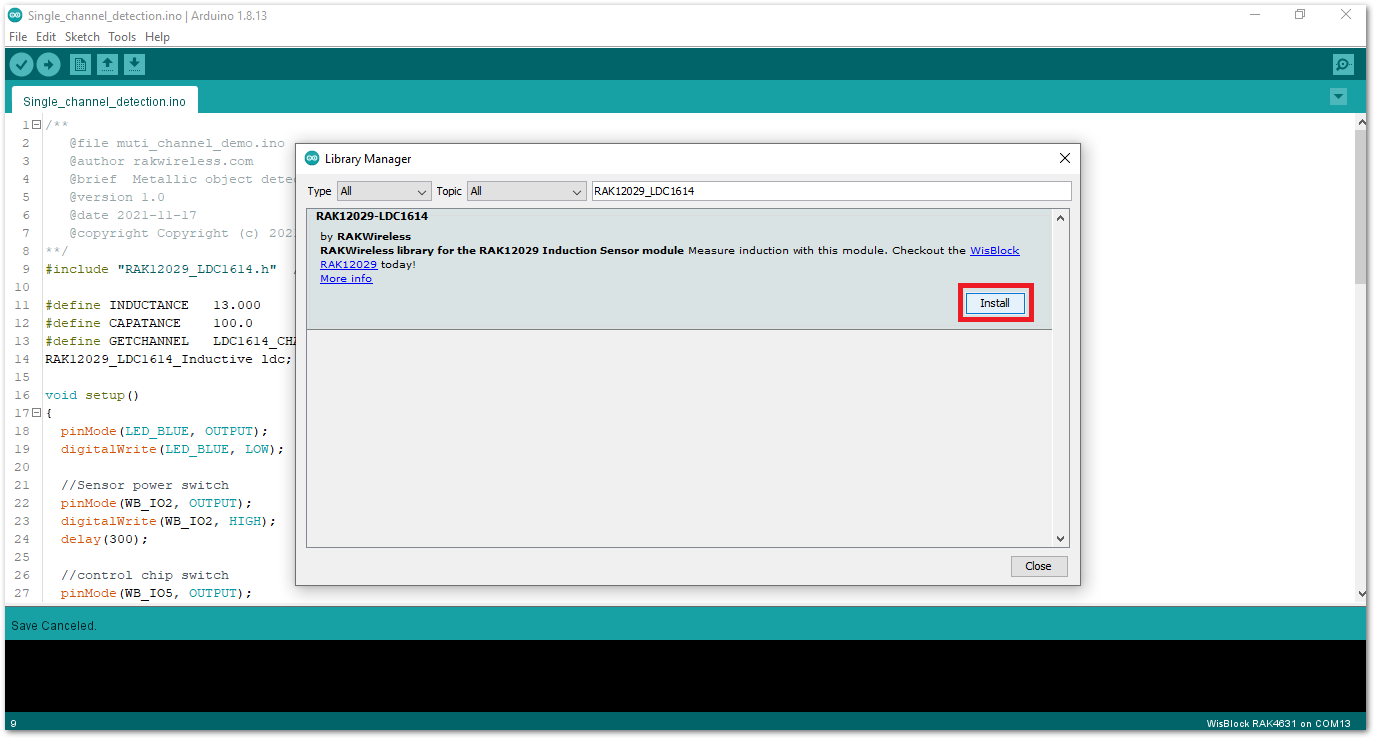 Figure 1: Installing the library of RAK12029
Figure 1: Installing the library of RAK12029- Then select the right serial port and upload the code, as shown in Figure 11 and Figure 12.
If you are using the RAK11200 as your WisBlock Core, the RAK11200 requires the Boot0 pin to be configured properly first before uploading. If not done properly, uploading the source code to RAK11200 will fail. Check the full details on the RAK11200 Quick Start Guide.
 Figure 1: Selecting the correct serial port
Figure 1: Selecting the correct serial port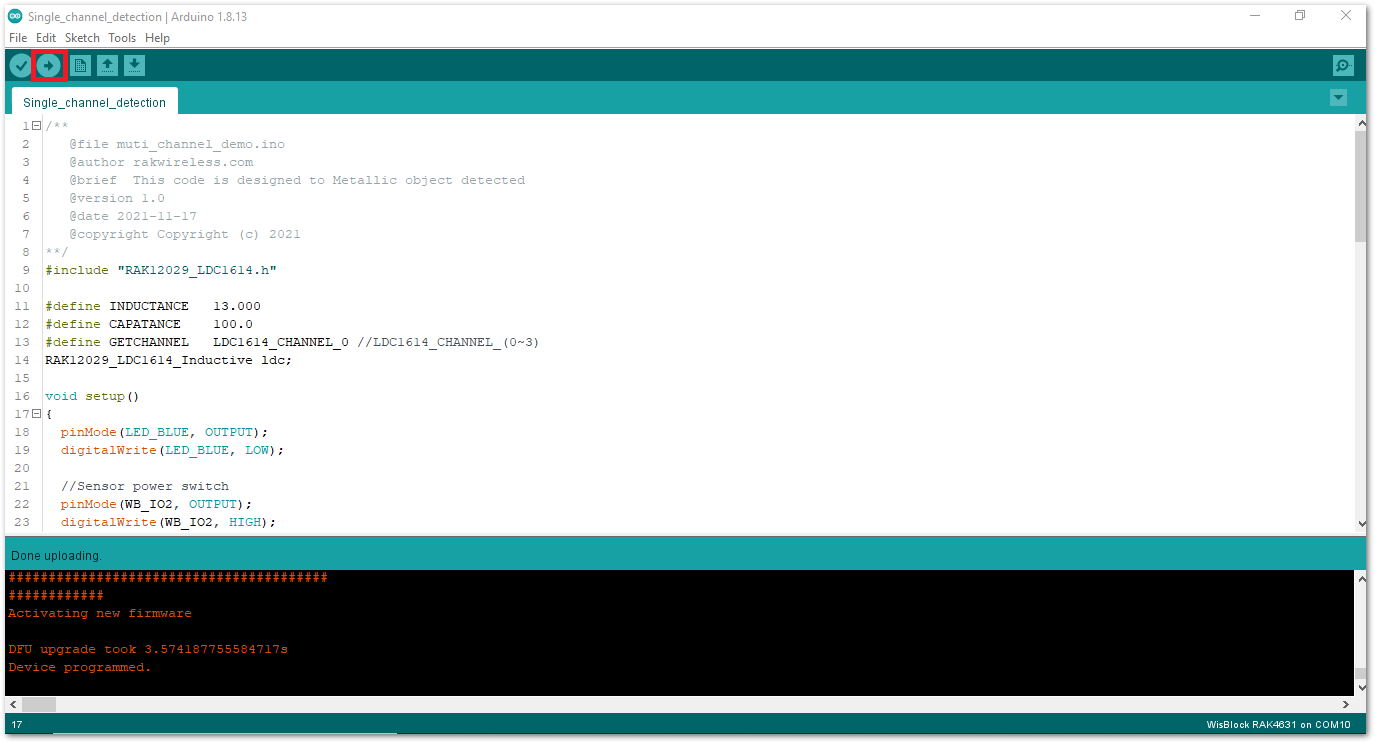 Figure 1: Uploading the sample code
Figure 1: Uploading the sample code- When you have successfully uploaded the sample code, place any metal or coin in the sensor, as shown in Figure 13. Then, you can open up your serial monitor to get the sensor readings, as shown in Figure 14.
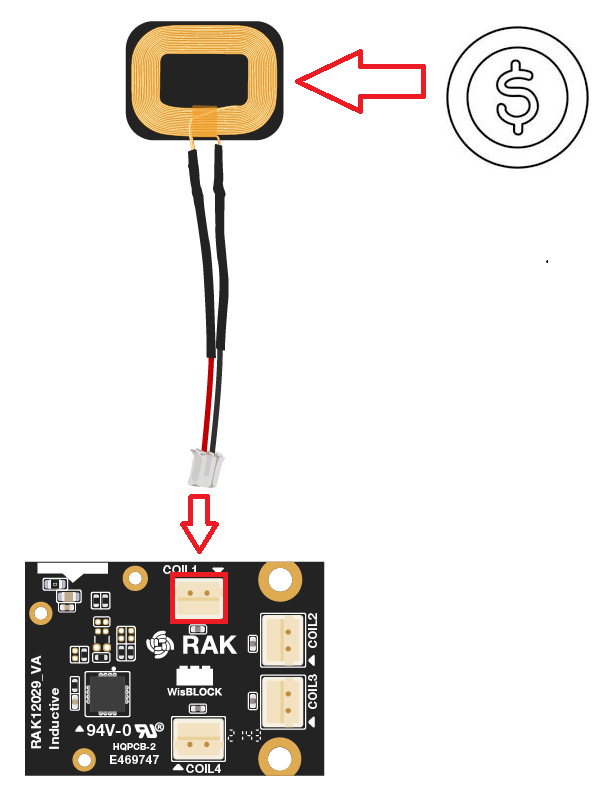 Figure 1: Testing the RAK12029 Inductive Sensor Module
Figure 1: Testing the RAK12029 Inductive Sensor Module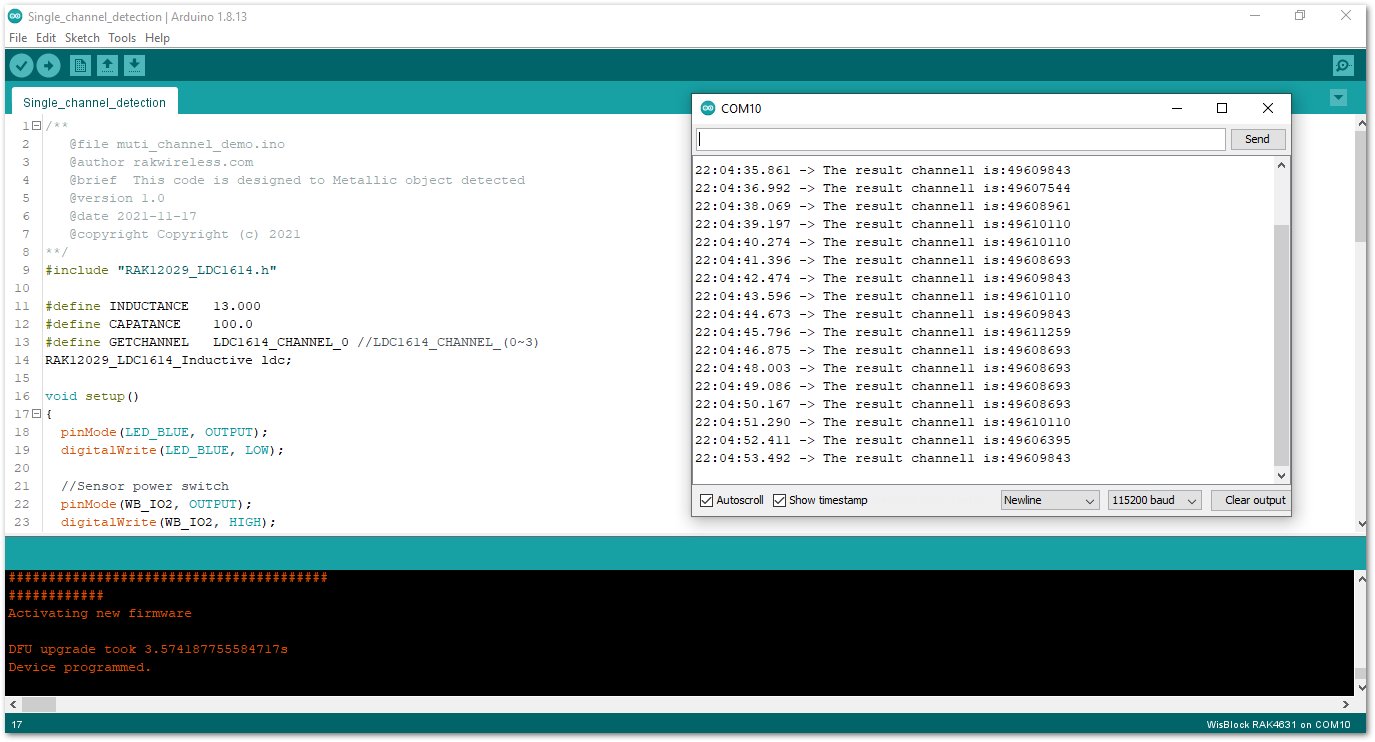 Figure 1: RAK12029 Inductive Sensor Module readings in the serial monitor
Figure 1: RAK12029 Inductive Sensor Module readings in the serial monitor